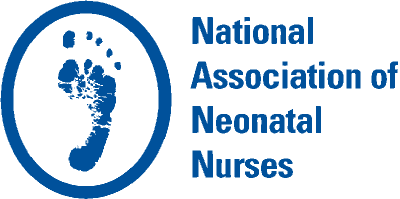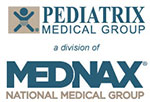Special Interest Group Update
In each issue, one of NANN’s special interest groups will share information in their area of focus.
Anti-Inflammatory Treatment of Chronic Lung Disease: A Review of Evidence
Julie Williams, MS CRNP NNP-BC
As medicine continues to advance, infants are surviving birth at younger gestational ages. In the United States, preterm delivery is a feature of 12.5% of pregnancies, and preterm infants have increased risks of medical impairments, including bronchopulmonary disease (BPD) and chronic lung disease (CLD) (Kair, Leonard, & Anderson, 2012). Although many factors play a role, the risk of developing CLD is inversely related to birth weight and gestational age (Kair, Leonard, & Anderson, 2012). Nonetheless, CLD is a significant problem and is associated with high rates of mortality and morbidity (Doyle, Ehrenkranz, & Halliday, 2010a).
BPD also known as CLD is categorized by the National Institute of Health (NIH) based on gestational age. For infants born at a gestational age less than 32 weeks who required supplemental oxygen for the first 28 days of life, BPD was classified as mild, moderate or severe depending on oxygen requirement at 36 weeks postmenstrual age (PMA). The infant with no oxygen requirement at 36 weeks PMA is considered mild. An oxygen requirement of less than 30% at 36 weeks PMA is moderate BPD. An oxygen requirement of greater than or equal to 30% and/or continuous positive airway pressure (CPAP) or ventilator support is classified as severe. For the infant born at a gestational age greater than 32 weeks, BPD was defined as an oxygen requirement for the first 28 days of life with severity based on the oxygen requirement at 56 days of life (Glen & Kinsella, 2011). For this article BPD and CLD will be used interchangeably based on the terminology used by the individual author.
Inflammation is a prominent factor in the pathogenesis of BPD, and steroids are often used as an anti-inflammatory agent to modify the path of lung disease (Bassler et al., 2015; Motlu et al., 2013). These steroids can be administered systemically or by inhalation (Shah, Ohlsson, Halliday, & Shah, 2017). Dexamethasone, hydrocortisone (HC), and betamethasone (BMZ) are common steroids used in neonates. Although steroids are effective in decreasing inflammation and even facilitating extubation, they are not without side effects (Ben Said, Hays, Loys, Coletto, Golbert & Picaud, 2013). In a study evaluating HC usage in preterm infants, HC was noted to have an increased risk of gastrointestinal perforation (Doyle, Ehrenkranz, & Halliday, 2010b). A comprehensive knowledge base of the available treatment options, as well as the risk and benefits of these treatments, is vital to provide parents with enough information to make an informed decision.
Hydrocortisone is one of the more commonly used postnatal corticosteroids in the preterm infant with respiratory failure. In a systematic review and meta-analysis of eight studies, postnatal hydrocortisone was noted to be effective in the treatment or prevention of BPD (Doyle, Ehrenkranz, & Halliday, 2010b). This review considered eight randomized control trials that involved a total of 880 preterm infants in the neonatal intensive care unit. Treatment began within the first week of life, and total HC dosage ranged from 5.8 mg/kg to 30 mg/kg over 5 to 15 days. Six of the eight trials had a primary study goal of preventing BPD, and the other two were concerned with treating hypertension. The review concluded that little evidence supported the postnatal use of HC in the dosage regimen studied to prevent BPD. No improvement was seen in the rates of BPD. However, an increase in gastrointestinal perforations was noted.
In another review Doyle, Cheong, Ehrenkranz, & Halliday (2017), studied the benefits and adverse effects of late (defined as greater than 7 days) postnatal systemic corticosteroids in the preterm infant with developing or established CLD. Twenty-one, randomized control trials, involving a total of 1,424 preterm infants in the neonatal intensive care unit were reviewed. Varying doses and lengths of therapy of HC or dexamethasone versus placebo were studied. This review concluded that the administration of corticosteroids to infants at least seven days after birth produced short‐term benefits by decreasing the need for assisted ventilation and the rate of bronchopulmonary dysplasia. High doses, however, were associated with short‐term side effects like bleeding from the stomach or bowel, higher blood pressure, and difficulty tolerating glucose.
A prospective observational study evaluated whether HC administered in low doses could safely and effectively treat CLD (Motlu et al., 2013). The study was conducted in a tertiary referral neonatal intensive care unit in Zekai Tahir Burak Maternity and Teaching Hospital in Ankara, Turkey. Ninety preterm infants who were less than 32 weeks gestational age or less than 1,500 grams at birth, ventilator dependent at or beyond 3 weeks of age or oxygen dependent at 36 weeks postmenstrual age without signs of infection were enrolled. HC dosing was initiated at 1 mg/kg twice a day for 7 days and then tapered by 10%–20% every other day if the infant was clinically stable. This study concluded that HC at 1 mg/kg/dose was effective for weaning patients with evolving CLD or CLD from respiratory support.
Ben Said and colleagues (2013) compared the tolerance and efficacy of BMZ and HC in weaning preterm extremely-low-birth-weight infants with BPD from the ventilator. This study was a retrospective cohort analysis. Data was collected in a prospective standardized way from 2005 to 2011 from extremely low-birth-weight infants receiving postnatal steroids after the second week of life. Sixty-seven preterm infants from the neonatal intensive care unit at University Hospital Croix Rousse in Lyons, France, were enrolled in this study. Thirty-five received BMZ, and 37 received HC. Rates of extubation, growth, glycemia, and blood pressure were measured. The study concluded that HC might be as effective as BMZ in assisting in the extubation of extremely low-birth-weight infants.
Bassler and colleagues (2015), in a study consisting of 863 infants ranging from 23 0/7 to 27 6/7 weeks gestation, randomized infants to either budesonide or placebo. The study aimed to determine whether early (within 24 hours) administration of budesonide was effective in the prevention of BPD. Two puffs of budesonide were administered every 12 hours for the first 14 days of life, and then the infant was weaned to one puff every 12 hours until the infant no longer needed supplemental oxygen and pressure support or reached a postmenstrual age of 32 weeks despite ventilator status. The study concluded that the incidence of BPD was lower among those receiving the study drug versus placebo.
Based on the evidence provided, corticosteroids are an effective therapy for the treatment of CLD/BPD. Some factors that have to be taken into consideration when applying this recommendation are whether the infant is septic, whether the infant will undergo treatment for a patent ductus arteriosus, and whether the infant has an abdominal process going on. This is important because these factors can increase the risk of adverse side effects. In summary, although corticosteroids may have adverse effects, they also are associated with some benefits, including the successful treatment of CLD.
References
Bassler, D., Plavka, R., Shinwell, E. S., Hallman, M., Jarreau, P. H., Carnielli, V., … Poets, C. F. (2015). Early inhaled budesonide for the prevention of bronchopulmonary dysplasia. New England Journal of Medicine, 373(16), 1497-1506.
Ben Said, M., Hays, S., Loys, C. M., Coletto, L., Godbert, I., & Picaud, J. C. (2013). Postnatal steroids in extremely low birth weight infants: betamethasone or hydrocortisone? Acta Paediatrica, 102(7), 689-694.
Doyle, L. W., Ehrenkranz, R. A., & Halliday, H. L. (2010a). Dexamethasone treatment after the first week of life for bronchopulmonary dysplasia in preterm infants: A systematic review. Neonatology, 98(4), 289–296.
Doyle, L. W., Cheong, J. L., Ehrenkranz, R. A., & Halliday, H. L. (2017). Late (> 7 days) systemic postnatal corticosteroids for prevention of bronchopulmonary dysplasia in preterm infants. The Cochrane database of systematic reviews, 10(10), CD001145. doi:10.1002/14651858.CD001145.pub4
Doyle, L. W., Ehrenkranz, R. A., & Halliday, H. L. (2010b). Postnatal hydrocortisone for preventing or treating bronchopulmonary dysplasia in Preterm Infants: A systematic review. Neonatology, 98(2), 111–117.
Glen, J., & Kinsella, J. (2011). Pathogenesis and Treatment of Bronchopulmonary Dysplasia. Current Opinion Pediatrics, 23(3), 305 - 313.
Kair, L. R., Leonard, D. T., & Anderson, J. M. Bronchopulmonary dysplasia. Pediatrics in Review, 33, 255–264.
Mutlu, B., Sandal, G., Kanmaz, G., Eraslan, Z., Erdeve, O., Oguz, S. S., & Dilmen, U. (2013). Postnatal oral hydrocortisone in treatment of bronchopulmonary dysplasia: An observational study. Tuberk Toraks, 61(3), 245–249.
Shah, S. S., Ohlsson, A., Halliday, H. L., & Shah, V. S. (2017). Inhaled versus systemic corticosteroids for preventing bronchopulmonary dysplasia in ventilated very low birth weight preterm neonates. The Cochrane database of systematic reviews, 10(10), CD002058. doi:10.1002/14651858.CD002058.pub3


